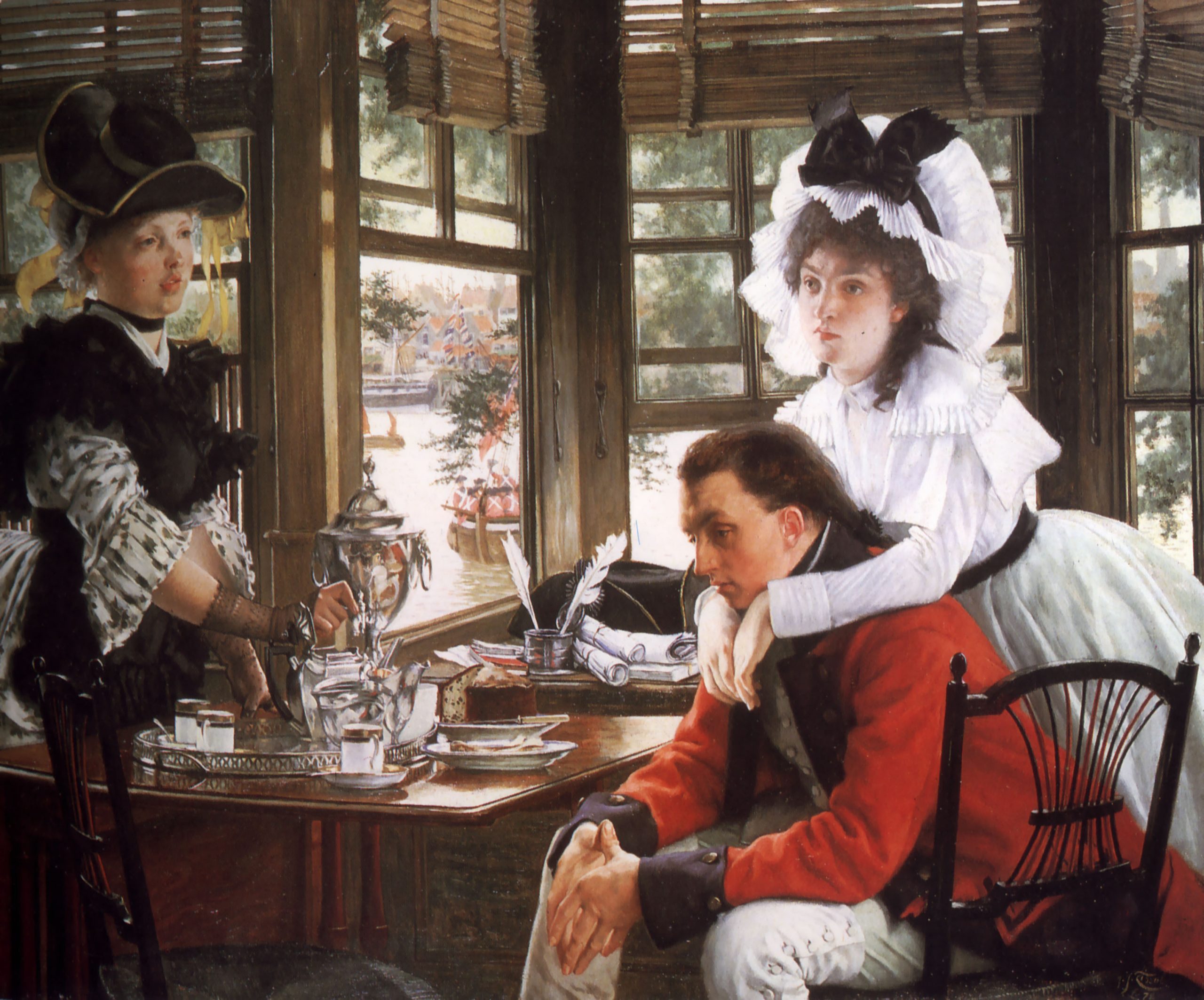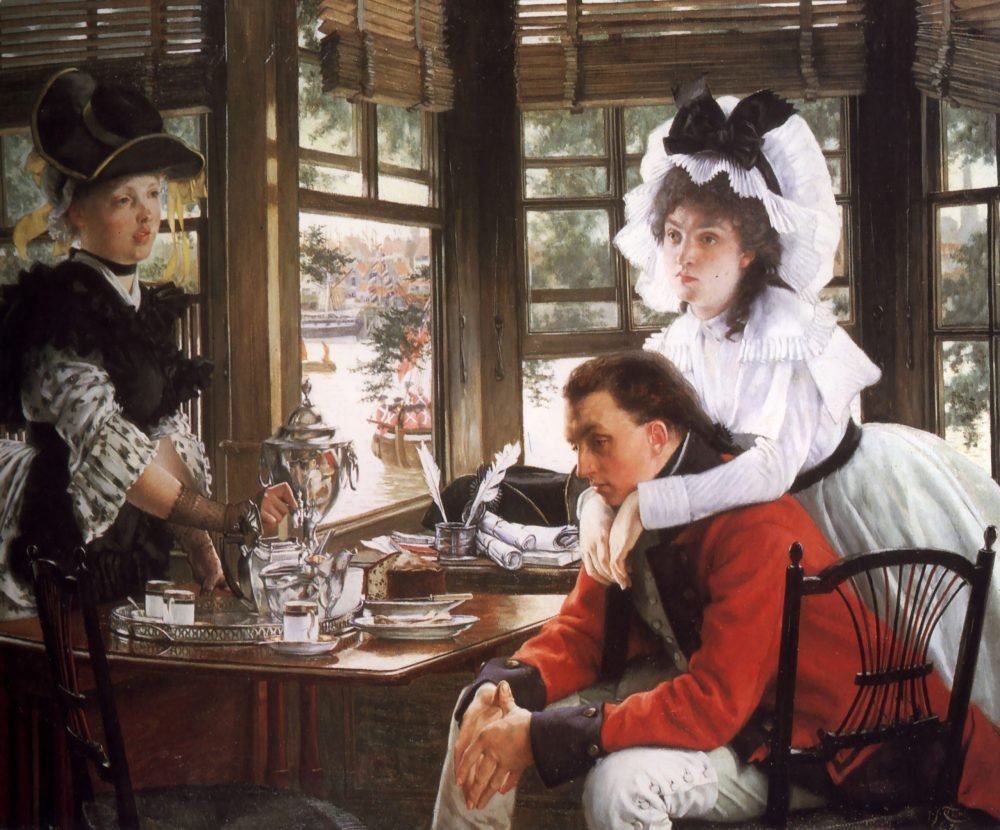For some, art is simply a mystery. WHY do some people have favourite paintings? Claim that some artists move them, with a few simple brush strokes? A large part of this alienation, I suspect, is because art interpretation is not taught – in a modern world, other skills have been prioritised in the education system, and slowly it is a skill that has withered…
Do we really understand paintings in today’s world? Here are nine tips to help you ‘read’ paintings and hopefully be able to appreciate them more.
1. Your gut feeling: a good place to start with a painting is your emotions and initial reaction to it. Follow your gut, and you will learn more about the tone of the piece. Do you feel sad looking at this painting? Or is it romantic?
Remember, an artist may be deliberately trying to evoke an emotional response, so question your immediate reactions and why you feel that way.
2. The symbolism: who or what is in the painting? What are they doing? This applies more to portraits, but keep an eye out for any figures in the background of landscapes, too. Their actions could help place the time, season or location of the image.
It is important to recognise that today, we are quite a ‘word-based’ society, whereas in centuries gone by, many members of the population were illiterate. Imagery was the easiest way to convey a message, whether that was in a simple broadside woodcut cartoon for the masses, or a large portrait in someone’s home. Indeed, some paintings are entirely fantastical, being real only within the artist’s mind.
For example, books on a table in a portrait often mean a learned sitter, an apple has Biblical connotations linking it to sin, and particularly in the 17th century, a woman with a slightly open mouth could hint at sexual availability…

This is the famous Arnolfini portrait, by Jan van Eyck in 1434. Note the way the man holds the lady’s hand, and him raising his other hand, in an oath-like way.
Now check in the mirror: we see more people looking in from a doorway. These aspects of the image, in combination with one another , ell us that the couple are almost certainly getting married in this image, with the other figures acting as witnesses.

3. The title of the work: a title might tell you more than you think, perhaps the name of the sitter. Or it might reveal a layer and hint at a theme you might not have picked up on or considered.
View this image below. Note the glum look on the couple’s faces.

Now, if we tell you this is called ‘Bad News’ [James Tissot, 1872], this instantly gives you context. It also fires up the imagination as to just *what* bad news had they received. Could it be a family death, and the man is restraining his emotions? Is the soldier to be deployed?
You then begin to scour the painting for more clues to help fill in the gaps. The other woman is filling the coffee pot, and – her lips parted – she seems to be the one who bore the bad news. Would she be so blasé if it were such terrible news? Or does she relish in disrupting the couple’s happiness? Her facial expression might indicate otherwise.
4. The date: what was going on at the time? Can this point to which movement the artist was part of? Just as literature is often affected and influenced by current affairs, so is art.
For example, continental art from the 1520 up until the 1570s would likely be influenced by the Reformation, which spread across Europe after 1517, and moved away from religious imagery; whereas a French painting dated to the 1790s should be considered against the backdrop of the French Revolution. Does that help you understand the scene better?
This page of Wikipedia has a detailed general overview of the goings on in Europe, from prehistory to today to assist.

‘Grey Day’, created in 1921, contrasts the fates of a wounded veteran and a stay-at-home businessman after the First World War. It shows a nihilistic approach, and its composition, with out of proportion and perspective elements, as well as exaggerations, rejects the artistic norms of realism at the turn of the 20th century.
5. Composition: who and what is placed where? Are there any contrasts or strange juxtapositions in this set up? Why have these particular objects, figures, or part of the landscape been included? Look at the surface level of these meanings, as well as deeper meanings.
6. Colour and texture: how do the tones create a mood in the image? Yellow often represents joy, happiness and optimism, whereas blue reflects peace and tranquility; red can indicate excitement. Note any jarring, or complimenting, shades.
What about brushstrokes? Soft strokes could be an attempt to add a vulnerability and innocence to the sitter or scene.
View the famous painting, ‘The Scream’ by Edvard Munch, and take in the colours, whilst noting the waves and swirls of paint. This helps project the feeling on anxiety of the figure, displaying a warped world.

7. Perspective: how do we, the viewer, see the scene? The artist has deliberately chosen to paint from a particular perspective, which affects the way we view the scene.
Is a sitter in the painting catching our eye, breaking the art version of the fourth wall? Do we only see a side view, or even silhouettes, hinting at secrecy or exclusion? Is this an intimate scene, that we feel our eyes are intruding upon? Also check for mirrors and see if they reflect anything of interest – maybe even the artist.
‘Les Meninas’ by Velázquez was created in 1656. Notice how most figures look towards the viewer, as if they are part of the painting. Or might we be looking through the eyes of the King and Queen, shown in the mirror’s reflection? Some believe they are not standing near the viewer, or are the viewer’s eyes, but are instead being painted by Velázquez at the easel.

8. Location and audience: do we know where was the painting was originally intended to be displayed? Who would have seen the painting? Who commissioned it? If this is available, a painting’s subject matter and messages should be read in these contexts to get at the heart of their meaning.
Pieces from the collection of Charles II, for example, were probably made to line the walls of his palaces, in which courtiers, foreign ambassadors walked. For example, look at Astraea Returns to Earth, or The Apotheosis of King Charles II. This was the centrepiece for the ceiling of Charles’ State Bedchamber, and works as an allegory of the Restoration itself. It features the royal oak being transported to heaven by putti, while an image of the King is held next to Astrea, who embodies justice, innocence, purity and precision, in the heavens. She points to Charles with her dagger.

The putti (cherubs) are righting the tree, and therefore, the world to right; an upturned oak had been regularly used as a symbol of the world turned upside down during the Interregnum. On the left is another cherub holding a set of scales, and a golden-haired seraph dominates the foreground, with a sash bearing the words ‘terras astraea revisit’ (justice has returned to the land). This demonstrates the just nature of monarchical government that has been re-established in Britain, and secondly that justice – i.e. God – is responsible for this return, reinforced by the scales and meaning of Astraea.
This idea was literally lauded over those who entered the bedchamber, reminding them of who was in charge, and the meaning of his return…
We should also bear in mind that a piece might have been created for the artist themselves to enjoy, without even intended for public consumption.
9. Don’t be afraid to ask. Society today shares little in common with the Russian court of the 18th century, and even less still with Germany in the 14th century, so meaning can sometimes be ‘lost in translation’ over the years. If you don’t understand something, see if you can find a literature on the room or gallery, or ask a member of staff if they can answer some questions. Staff at galleries and museums are usually there because they enjoy history or art, and have almost certainly had training to learn more about the collection(s) they oversee; they might be able to shed some light on the object in question.
Failing that, turn to your friend Google! A simple search for the symbol or object in question, in relation to art, will bring up a plethora of sources, from art critic blogs, to gallery analyses of paintings: you are sure to find help.
Let us know your favourite works of art in the comments, and maybe even have a go at using these tips to ‘re-read’ it and see if you notice anything new about it!









